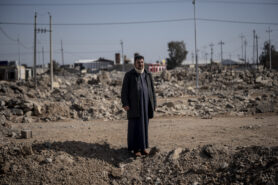The Western state-led turn to remote forms of military intervention as recently deployed in the Middle East and across Africa is often explained as resulting from risk aversion (avoidance of ground combat), materiality (‘the force of matter’) or the adoption of a networked operational logic by major military powers, mimicking the ‘hit-and-run’ tactics of their enemies. Although recognizing the mobilizing capacities of these phenomena, we argue that the new military interventionism is prompted by a more fundamental transformation, grounded in the spatial and temporal reconfiguration of war.
We see a resort to ‘liquid warfare’ as a form of military interventionism that shuns direct control of territory and populations and its cumbersome order-building and order-maintaining responsibilities, focusing instead on ‘shaping’ the international security environment through remote technology, flexible operations and military-to-military partnerships.
We draw upon assemblage as a heuristic device and the case of the US Africa Command (AFRICOM) to flesh out the complex and fluid nature of liquid warfare and the ways by which power operates across space. We outline how the forging of a transnational military assemblage in the name of ‘hunting Kony’ allowed for the buildup of an archipelago of military bases and operational capabilities across Africa, which serve as hubs for the monitoring, disrupting and containment of potential risks and dangers.



